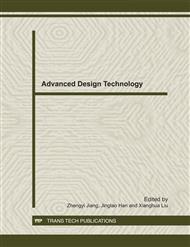[1]
C Lin, W Chow, C Madu, C Kuei, P Peiyu, A structural equation model of supply chain quality management and organizational performance. International Journal of Production Economics, 2005, 96(3), 355-365.
DOI: 10.1016/j.ijpe.2004.05.009
Google Scholar
[2]
Hale Kaynak, Janet L. Hartley, A replication and extension of quality management into the supply chain. Journal of Operations Management, 2008, 26(4), 1032 - 1048.
DOI: 10.1016/j.jom.2007.06.002
Google Scholar
[3]
Brian Fynes, Chris Voss, Sean de Burca, The impact of supply chain relationship quality on quality performance. International Journal of Production Economics, 2005, 96(3), 339-354.
DOI: 10.1016/j.ijpe.2004.05.008
Google Scholar
[4]
R Sroufe, S Curkovic, An examination of ISO 9000:2000 and supply chain quality assurance. Journal of Operations Management. 2008, 26(4), 503-520.
DOI: 10.1016/j.jom.2007.06.006
Google Scholar
[5]
JI Guoguang, ZHAO Jing. ISO9000: 2000 standard training material. China Standard Press, China, Beijing, 2001.
Google Scholar
[6]
Tang xiaofen. Guiding for Performance Excellence Model. China standards press, China, Beijing, 2005.
Google Scholar
[7]
Information on http://www.efqm.org/en/PdfResources/PUB0723 InEx en v2.1.pdf
Google Scholar
[8]
Information on http://www.caq.org.cn/html/nqa_news/2011-1/10/134844.shtml
Google Scholar
[9]
Ching-Yi Chiang, Ming-Hung Shu, Supplier evaluation with quality-based fuzzy data. IEEE International Conference on Industrial Engineering and Engineering Management, 2009, pp, 472 - 476.
DOI: 10.1109/ieem.2009.5373304
Google Scholar
[10]
Shu M-H, Wu H-C, Quality-based supplier selection and evaluation using fuzzy data. Computers & Industrial Engineering, 57(2009), 1072-1079,.
DOI: 10.1016/j.cie.2009.04.012
Google Scholar
[11]
Zhang Xuehong, Xiao Lin, Feng Yi, Model Research and System Design of Internal Evaluation of Power Supply Service Quality Based on Improved Fuzzy AHP. 3rd International Conference on ISKE, 2008, 407 - 410.
DOI: 10.1109/iske.2008.4730964
Google Scholar
[12]
Ufuk Cebeci, Fuzzy AHP-based decision support system for selecting ERP systems in textile industry by using balanced scorecard. Expert Systems with Applications, 2009, 36(5), 8900-8909.
DOI: 10.1016/j.eswa.2008.11.046
Google Scholar
[13]
Orlando Durán, José Aguilo, Computer-aided machine-tool selection based on a Fuzzy-AHP approach. Expert Systems with Applications, 2008, 34(3), 1787-1794.
DOI: 10.1016/j.eswa.2007.01.046
Google Scholar
[14]
Douglas M.Lambet, Martha Cooper, Janus D.Pagh. Supply Chain Management: Implementation Issues and Research Opportunities. The international Journal of Logistics Management, 1998, 9(2), 130-139.
DOI: 10.1108/09574099810805807
Google Scholar


